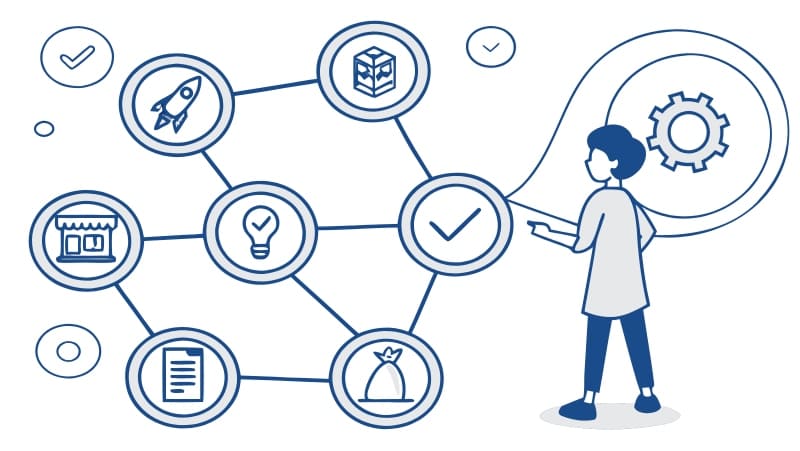What Does Supply Chain Management Do?
Supply chain management feels like magic when it works perfectly. You order something online and it arrives at your door without thinking about the complex network behind it. But when things go wrong, you feel the pain immediately.
Supply chain management coordinates every step from raw materials to final delivery, ensuring products reach customers efficiently while controlling costs, quality, and timing across all manufacturing and distribution processes.

After seven years in cross-border e-commerce, I’ve learned that supply chain management is the backbone of any successful product business. Let me walk you through what it really does and why it matters for your business growth.
What Are 5 Key Roles in the Supply Chain?
Managing a supply chain means juggling multiple roles at once. Each role connects to the others like pieces in a puzzle. Miss one piece and the whole picture falls apart.
The five key supply chain roles are procurement (sourcing materials), production (manufacturing goods), inventory management (controlling stock levels), logistics (moving products), and customer service (ensuring satisfaction throughout the delivery process).
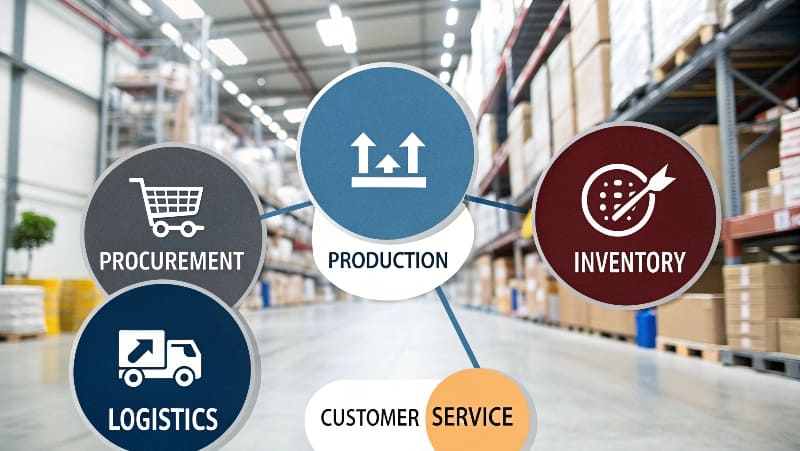
Understanding these roles changed how I approach product launches. Procurement starts everything by finding the right suppliers and materials. I spend weeks researching manufacturers in Shenzhen, comparing prices, and checking quality standards. This role determines your product cost and quality baseline.
Production transforms raw materials into finished goods. This role manages manufacturing schedules, quality control, and capacity planning. I work closely with factory managers to ensure production meets our specifications and deadlines. Any delay here affects everything downstream.
Inventory management balances supply and demand. This role prevents stockouts while avoiding excess inventory costs. I use forecasting tools to predict demand, but market changes often surprise us. Too much inventory ties up cash. Too little inventory loses sales.
| Role | Primary Function | Key Metrics | Common Challenges |
|---|---|---|---|
| Procurement | Source materials and suppliers | Cost savings, quality scores | Supplier reliability |
| Production | Manufacture products | Output volume, defect rates | Capacity constraints |
| Inventory | Manage stock levels | Turn rates, stockout frequency | Demand forecasting |
| Logistics | Move products | Delivery time, shipping costs | Transportation delays |
| Customer Service | Ensure satisfaction | Response time, resolution rate | Communication gaps |
Logistics moves products from factories to customers. This role coordinates shipping, customs clearance, and last-mile delivery. I’ve learned that reliable logistics partners are worth their weight in gold. They handle the complex paperwork and routing that makes international shipping work.
Customer service closes the loop by handling inquiries, returns, and feedback. This role provides valuable data about product performance and customer expectations. I review customer feedback weekly to identify supply chain issues before they become major problems.
What Are the Skills Required for Supply Chain Management?
Supply chain professionals need both technical and soft skills. The technical skills help you understand the systems and processes. The soft skills help you work with people across different cultures and time zones.
Essential supply chain management skills include analytical thinking for data-driven decisions, communication for coordinating with global partners, problem-solving for handling disruptions, technical proficiency with supply chain software, and negotiation abilities for vendor management.
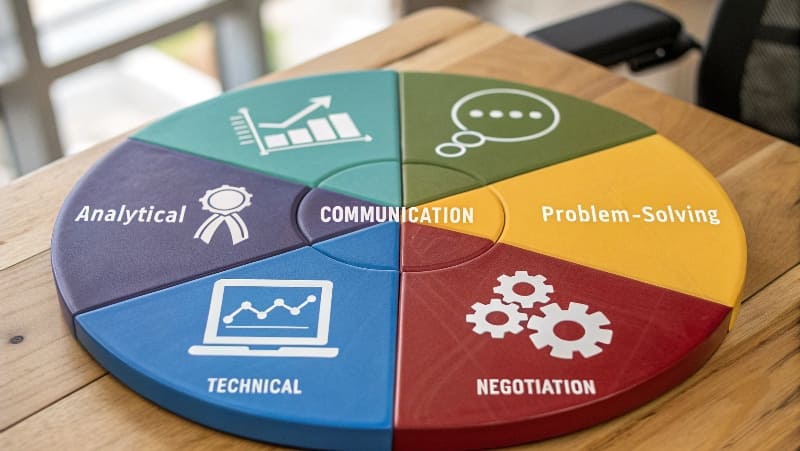
Analytical thinking tops my list because supply chains generate massive amounts data. I analyze supplier performance metrics, inventory turnover rates, and shipping costs daily. Excel became my best friend, but I also use specialized software for demand forecasting and supplier scorecards.
Communication skills matter more than most people realize. I coordinate with suppliers in China, logistics companies worldwide, and customers across different time zones. Clear communication prevents misunderstandings that can delay shipments or compromise quality.
Problem-solving skills get tested constantly. Supply chains face disruptions from weather, political changes, factory issues, and shipping delays. I’ve handled everything from typhoons shutting down ports to factories running out of raw materials. Quick thinking and backup plans save the day.
Technical skills keep evolving with new software and systems. I use ERP systems for inventory tracking, communication platforms for supplier coordination, and analytics tools for performance monitoring. Staying current with technology gives you competitive advantages.
| Skill Category | Specific Skills | Why It Matters | Development Methods |
|---|---|---|---|
| Analytical | Data analysis, forecasting | Data-driven decisions | Online courses, certifications |
| Communication | Cross-cultural, written, verbal | Global coordination | Language learning, practice |
| Problem-solving | Critical thinking, creativity | Handle disruptions | Case studies, experience |
| Technical | Software proficiency, systems | Efficiency gains | Training programs, hands-on use |
| Negotiation | Relationship building, persuasion | Cost optimization | Role playing, mentorship |
Negotiation skills directly impact your bottom line. I negotiate with suppliers on prices, payment terms, and quality standards. Building relationships takes time, but it pays off when you need favors or face urgent situations.
What Are the Challenges of the Chinese Supply Chain?
Working with Chinese suppliers brings unique advantages and challenges. The manufacturing capabilities are impressive, but cultural and logistical differences require careful management.
Chinese supply chain challenges include language barriers affecting communication, quality control requiring constant monitoring, long lead times for product development, cultural differences in business practices, and regulatory compliance with changing export requirements.
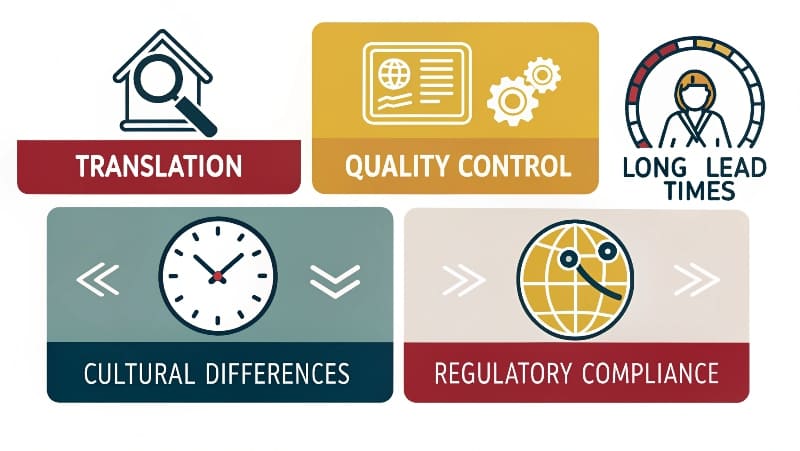
Language barriers create the most frequent problems. Even suppliers with English speakers sometimes miss nuances in specifications. I’ve learned to use detailed drawings, physical samples, and multiple communication channels. Video calls work better than emails for complex discussions.
Quality control requires persistent attention. Chinese manufacturers can produce excellent quality, but standards vary widely between factories. I visit facilities personally when possible and use third-party inspection services for critical orders. Building quality requirements into contracts helps set clear expectations.
Lead times often stretch longer than planned. Product development cycles commonly take 2-3 months from concept to sample. Manufacturing schedules depend on raw material availability and factory capacity. I build buffer time into project timelines and maintain relationships with backup suppliers.
Cultural differences affect business relationships and decision-making processes. Chinese business culture emphasizes relationship building and face-saving. I invest time in personal relationships with key suppliers and avoid confrontational approaches to problem-solving.
| Challenge Area | Specific Issues | Impact on Business | Mitigation Strategies |
|---|---|---|---|
| Communication | Language barriers, time zones | Misunderstandings, delays | Bilingual staff, clear documentation |
| Quality | Variable standards, oversight | Customer complaints, returns | Regular inspections, clear specs |
| Timing | Long lead times, delays | Inventory issues, missed sales | Buffer planning, backup suppliers |
| Culture | Different business practices | Relationship strain | Cultural training, patience |
| Compliance | Changing regulations | Shipment delays, penalties | Regular updates, legal counsel |
Regulatory compliance grows more complex each year. Export regulations, product certifications, and trade policies change frequently. I subscribe to trade publication updates and work with customs brokers who understand current requirements.
What Is the China +1 Supply Chain Strategy?
The China +1 strategy emerged as companies sought to reduce supply chain risks while maintaining access to Chinese manufacturing capabilities. This approach balances efficiency with resilience.
China +1 supply chain strategy involves maintaining primary manufacturing in China while developing secondary production capabilities in other countries, reducing dependency risks while preserving cost advantages and established supplier relationships.
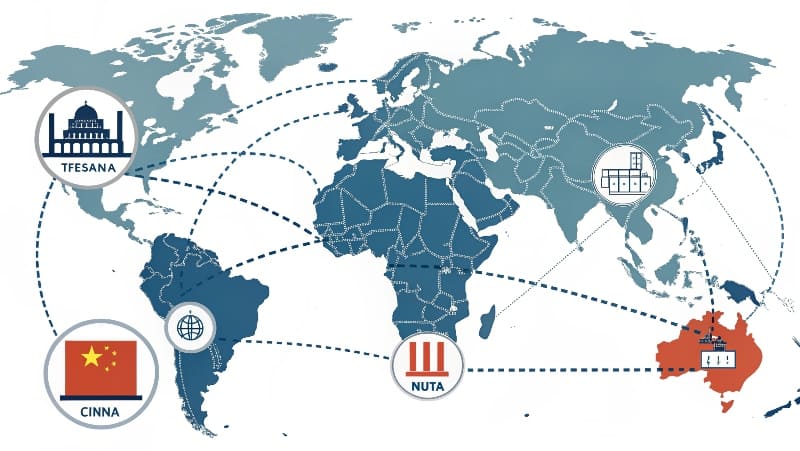
The strategy addresses several business risks I’ve experienced firsthand. Trade tensions between countries can suddenly increase tariffs or create shipping restrictions. Having alternative production locations provides flexibility when political situations change.
Diversification reduces operational risks beyond politics. Natural disasters, factory fires, or labor strikes can shut down production in any single location. I maintain relationships with suppliers in Vietnam and Thailand as backup options for critical products.
Cost optimization opportunities exist in different countries for different products. While China excels in electronics manufacturing, other countries may offer advantages for textiles or raw materials. I evaluate total landed costs including shipping, duties, and quality factors.
Implementation requires careful planning and relationship building. You cannot simply copy Chinese operations to another country. Each location has different capabilities, regulations, and business practices. I start with smaller orders to test new suppliers before committing to large volumes.
| Implementation Phase | Key Activities | Timeline | Success Metrics |
|---|---|---|---|
| Research | Market analysis, supplier identification | 3-6 months | Qualified supplier list |
| Testing | Small orders, quality validation | 6-12 months | Quality benchmarks met |
| Scaling | Increased volumes, process optimization | 12-18 months | Cost targets achieved |
| Integration | Full operational capability | 18+ months | Risk reduction goals met |
The strategy works best as a gradual transition rather than sudden change. I maintain strong Chinese supplier relationships while slowly building capabilities elsewhere. This approach provides flexibility without burning bridges or disrupting existing operations.
Conclusion
Supply chain management orchestrates the complex dance of moving products from concept to customer, requiring diverse skills and strategic thinking to navigate global challenges successfully.


